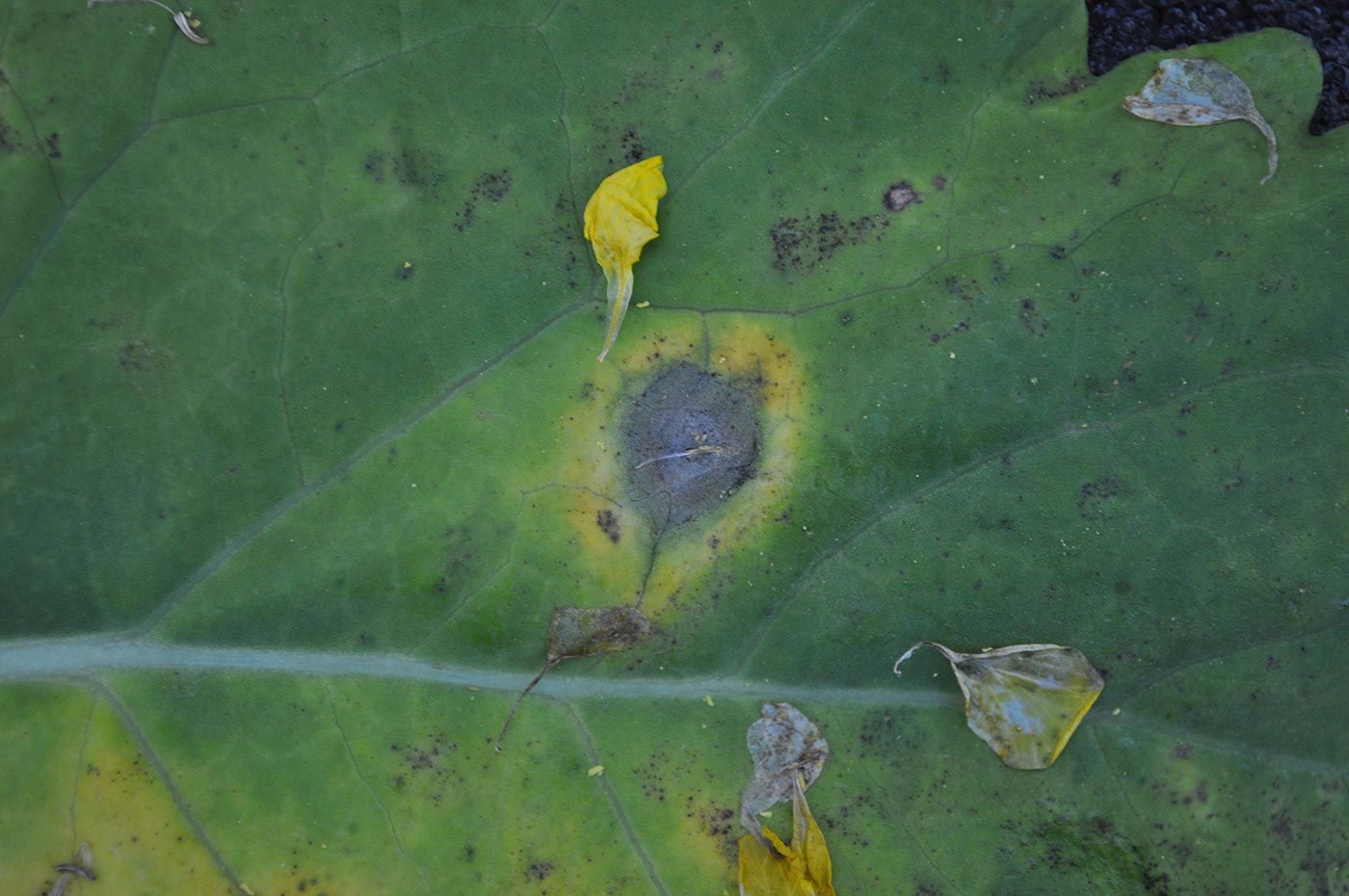Sclerotinia management
1. The challenge
Sclerotinia stem rot remains the most widespread and consistent – yet unpredictable – yield robber of canola on the Prairies. With hundreds of suitable hosts (most broadleaf plants), sclerotinia finds its way into almost any area. Sclerotinia is particularly effective in canola due to the abundance of dropped flower petals that satisfy the fungus’s need for dying plant tissue as a quick and easy first energy source.
2. The risks
Canola provides a near-perfect host for sclerotinia stem rot. Frequency of canola (or other broadleaf crop and weeds) in rotation and a sclerotium’s lifespan of several years in the soil means that the “seed” for this disease is almost always waiting and ready to germinate and release spores. With the right weather conditions prior to and during flowering, apothecia can release millions of ascospores within a canola field or in nearby fields and start the disease cycle with a vengeance. Dropped canola petals with a bit of moisture provide for disease development – if spores are present.
Drought and a number of management strategies could decrease a canola crop’s susceptibility to sclerotinia. These strategies include low seeding rate, minimal use of nitrogen and wider row spacings that discourage crop canopy closure and allow air circulation to dry the canopy – essentially anything that would lead to a thin, low-yielding crop. In contrast, a crop that is well fertilized and has a thick canopy to effectively capture sunlight and cover the ground – essentially any field with high yield potential – is at higher risk for sclerotinia stem rot infection.
3. The solution
Since targeting a thin low-yielding crop isn’t really a preferred strategy, fungicides remain a common and important management tool for sclerotinia stem rot. But whether to apply and when to apply a fungicide is often an educated guess based on previous moisture conditions. The “wet pants” test – scouting your field to see if the crop canopy has free moisture – remains the only reliable technique to check for leaf wetness. This combined with finding apothecia or assuming moisture conditions mean they’ll be there (apothecia are difficult to find) is enough to justify the investment in fungicide. Application timing is recommended to occur between 20 and 50 per cent flower – before significant petal drop.
Sclerotinia-tolerant varieties have been on the market for a number of years, and can help reduce sclerotinia infection. Under high pressure, sclerotinia-tolerant varieties will also benefit from a fungicide application. Using this trait moves some of the decision making for managing sclerotinia back to the time of seed purchase.
4. Improvements on the “wet pants” scouting method
Using the Sclerotinia Checklist allows the producer to assign risk from factors like:
- Number of years since last canola crop
- Severity of sclerotinia stem rot in last host crop
- Crop density
- Amount of rain in the last two weeks
- Weather forecast
- Regional risk of apothecia development
The wet pants test tends to work because it’s measuring moisture – the key driver for sclerotinia. Moisture prompts sclerotia to germinate and produce apothecia that produce spores, then drives disease establishment on canola plants. A DNA petal test for the presence of spores has become available commercially, but remains a relatively new tool for growers. Spore sensors that might actually text you when a specific field reaches a threshold number are currently being researched and will see some field validation in 2017.
5. Costs and ROI
The return on investment (ROI) for a sclerotinia fungicide application is as difficult to predict as the weather. Growers who experienced significant yield loss in the past from sclerotinia stem rot are comfortable applying a fungicide between 20 to 50 per cent flower as a preventative or insurance application. When averaged over a number of years, ROI should be positive as a well-timed fungicide application should prevent disease development during that critical early flowering period.
While a fungicide application in low-pressure years might not save more than the two or so bu./ac. required to break even, in higher-pressure years where significant disease reduction results as expected, the fungicide application really pays well. Leaving a well-placed check strip or two is really the only way to learn over time how well you are managing this disease. With high pressure from sclerotinia stem rot, as experienced in 2016, two applications of fungicide would likely have provided a profitable return – but that’s easier to predict in hindsight





